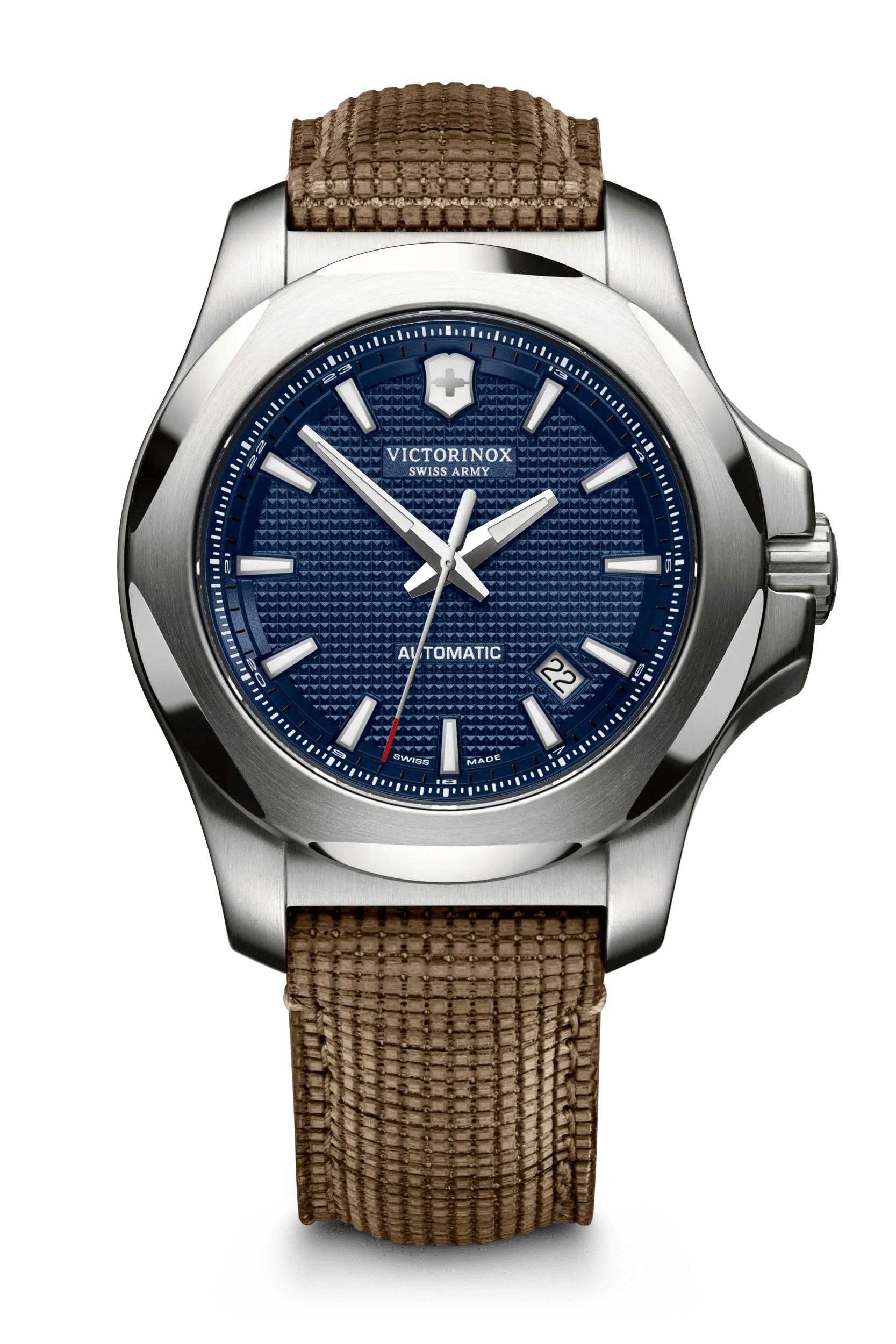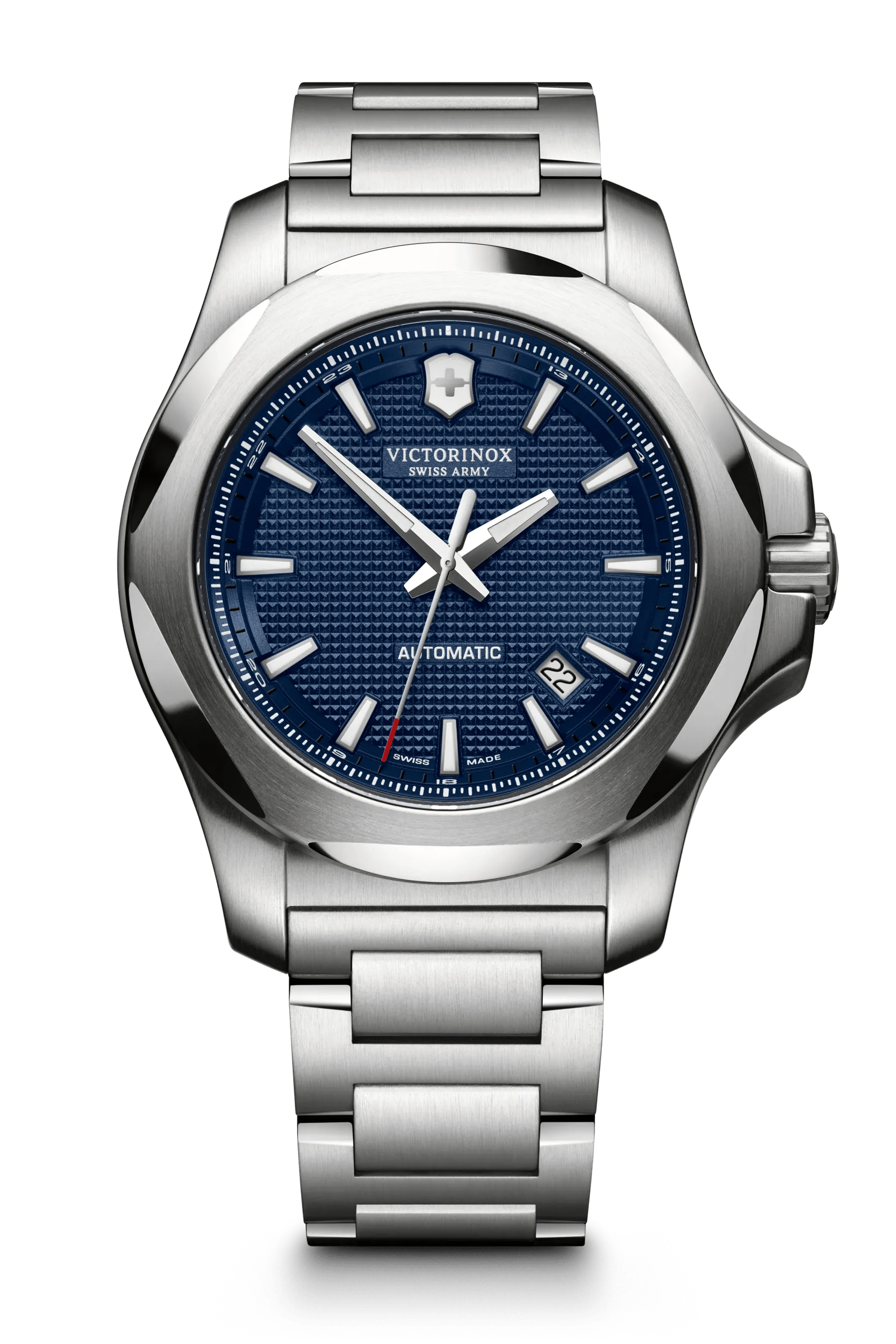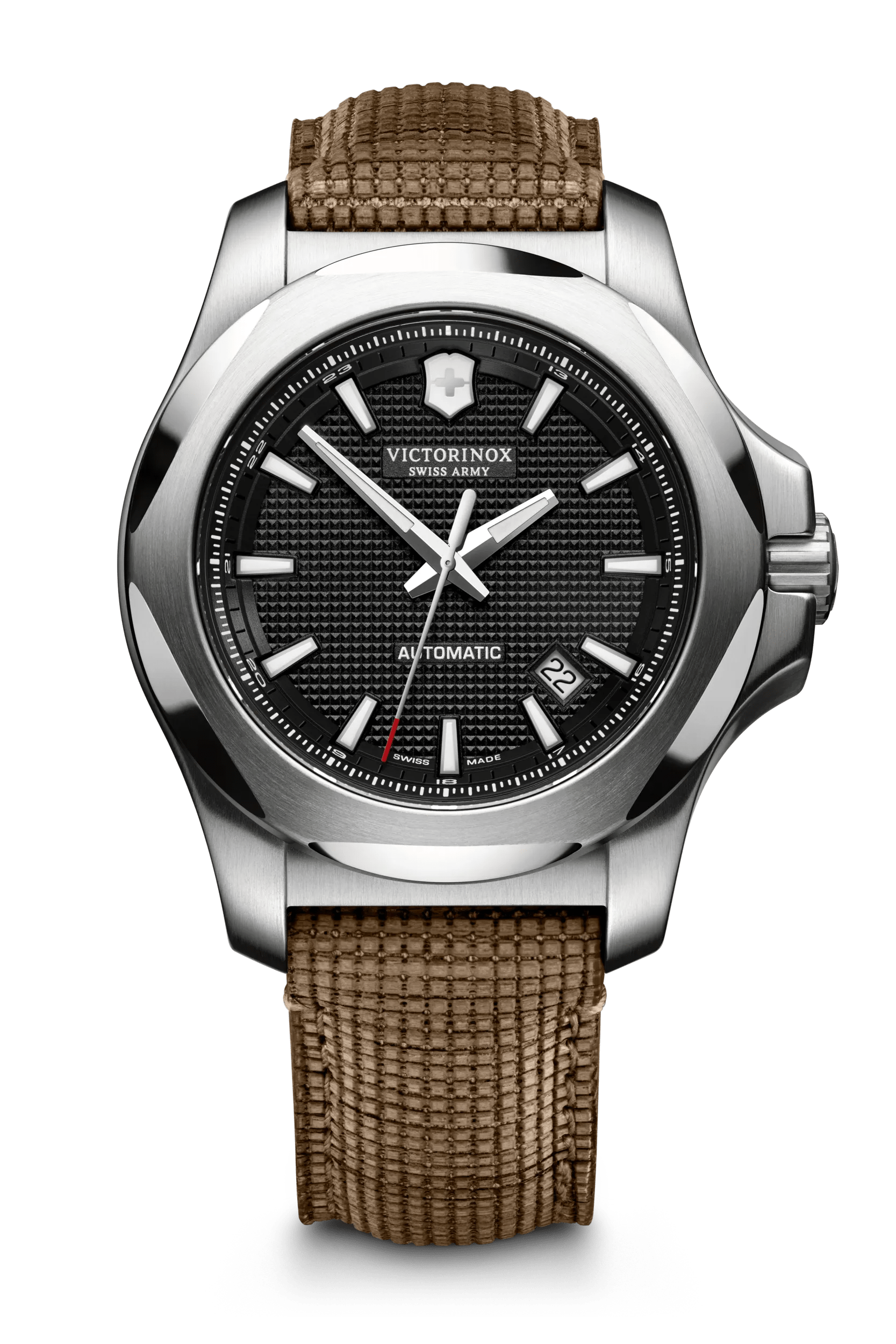Everything has its time – this year the time was ripe for a new “Made in Switzerland” design icon.
On Point: The I.N.O.X. Mechanical
On Point: The I.N.O.X. Mechanical
Everything has its time – this year the time was ripe for a new “Made in Switzerland” design icon: the I.N.O.X. Mechanical, eagerly awaited by fans and connoisseurs in the industry, designed with painstakingly detailed work and technically realized by the Victorinox watch experts in Delémont in the Swiss Jura.
We met Basile Maeder, product manager at the center of excellence in Delémont, to learn a little more about the creative process and the special features of the I.N.O.X. Mechanical.
Basile Maeder, you are the product manager at the Victorinox center of excellence in Delémont; what precisely is your role?
As the product manager, I assist in the development of each new watch model from A to Z; I lead the design teams from the creative concept to the final design, before the design file goes to the technical office. This is my specialization, and now and then I also create special watch dial designs.
From the initial concept to readiness for the market? What does the development process look like in practice and how long does it take on average?
The development of a new product takes an average of 18 months; for the quartz model of the I.N.O.X. it took us more than three years. The process follows a clear, bindingly defined structure, and the entire process is broken down into seven steps: concept, design, technical study, prototyping, approval, delivery, and release.
The first I.N.O.X. was introduced in 2014 and very quickly there were calls for a mechanical version. Can you explain to us why that was?
In fact, that question cropped up as soon as we had presented the I.N.O.X. to the public for the first time at Baselworld 2014. Connoisseurs of the industry are always excited about mechanical models because they are more prestigious. It was therefore not at all surprising and is completely normal that a question like that should come up immediately when presenting a new watch.
The development took some time; what were the challenges and how were they resolved?
We went through several stages of reflection in the development of the mechanical version. First of all, it was intended to be clearly distinguishable visually from the quartz version so that customers could see at first glance that it is a mechanical model. Because the design of the case had already been defined by the quartz version, we concentrated on the design of the watch dial, but this also had to conform to the DNA of the original template. That’s why we chose an “Alox” structure with a more metallic surface, similar to the Swiss Army Officer’s Knife. Other points were the strap and the demand to make the watch as durable in everyday use as possible.
La correa está hecha de madera, ¿que la distingue de las alternativas de acero, caucho o paracord?
La madera es un material natural y lo especial de la correa de madera es que cada una es única. Cada correa termina en un color un poco diferente por el origen natural del material y toma una pátina individual con el uso. El diseño y la sustentabilidad: ambas cualidades son muy importantes para nosotros.
Un movimiento de cuarzo analógico y un movimiento mecánico, ¿puede explicarlo una vez más en detalle para la persona común? ¿Cuál es la diferencia exactamente? ¿Y qué hace que el movimiento automático sea tan sensible?
La diferencia más notable yace en el hecho de que el movimiento de cuarzo analógico está impulsado por una batería, mientras que el movimiento mecánico está equipado con un resorte. En otras palabras: lo que funciona electrónicamente con un movimiento de cuarzo analógico debe realizarse por más de cien partes pequeñas que funcionan juntas en un movimiento mecánico. Esto explica la mayor sensibilidad del movimiento mecánico.
La parte trasera de la caja del I.N.O.X. Mechanical es transparente y le permite ver claramente el mecanismo detrás de ella; ¿cuál es la idea detrás de eso?
En general, a nuestros clientes les gusta poder ver la tecnología de un movimiento mecánico a través de la parte trasera de la caja. Es por eso que todos nuestros relojes automáticos tienen este tipo de tapa de caja.
¿Qué valores o percepciones asocia personalmente con la etiqueta “Swiss made”?
Creo que es algo que seguirá siendo muy importante para los puristas, pero probablemente sea un poco diferente para las próximas generaciones de consumidores. Para una marca como la nuestra, que tiene una bandera suiza en su marca registrada, principalmente tiene que ver con el compromiso propio de ofrecer productos de alta calidad que se fabriquen en Suiza; y esto seguirá siendo así en el futuro. Por eso invertimos en un centro de excelencia en Delémont, en la región suiza de Jura, donde funciona la investigación y el desarrollo internos, y tenemos nuestras propias instalaciones de ensamblaje y producción.
¿También usa un reloj Victorinox para su vida diaria? Y si es así, ¿cuál?
Sí. Y para ser honesto, uso dos: uno en cada muñeca, y ambos son modelo I.N.O.X., una versión mecánica en la muñeca izquierda y una versión de cuarzo analógico en la derecha; cada uno levemente personalizado.
Se agregó el producto a su carro de compras




